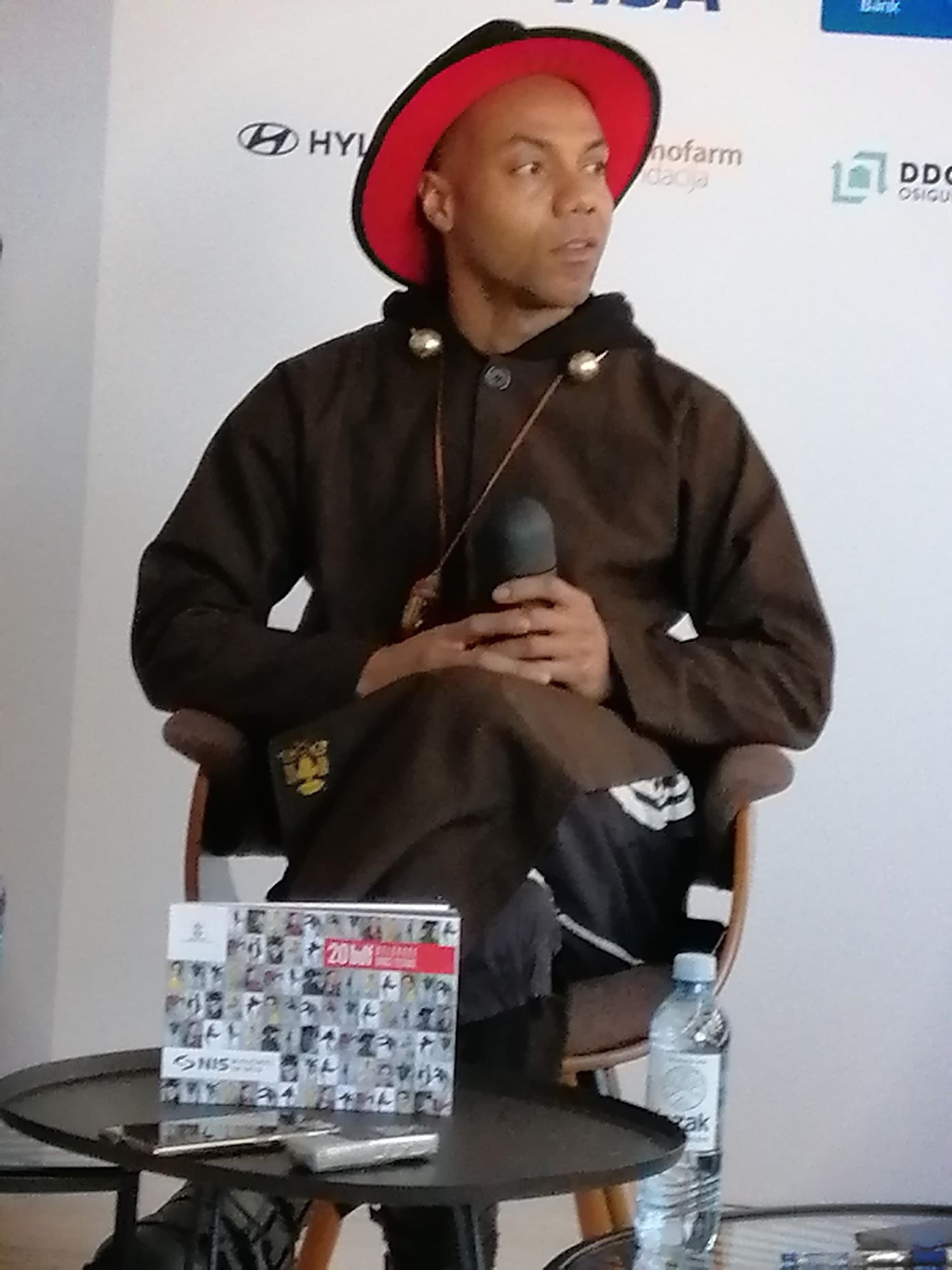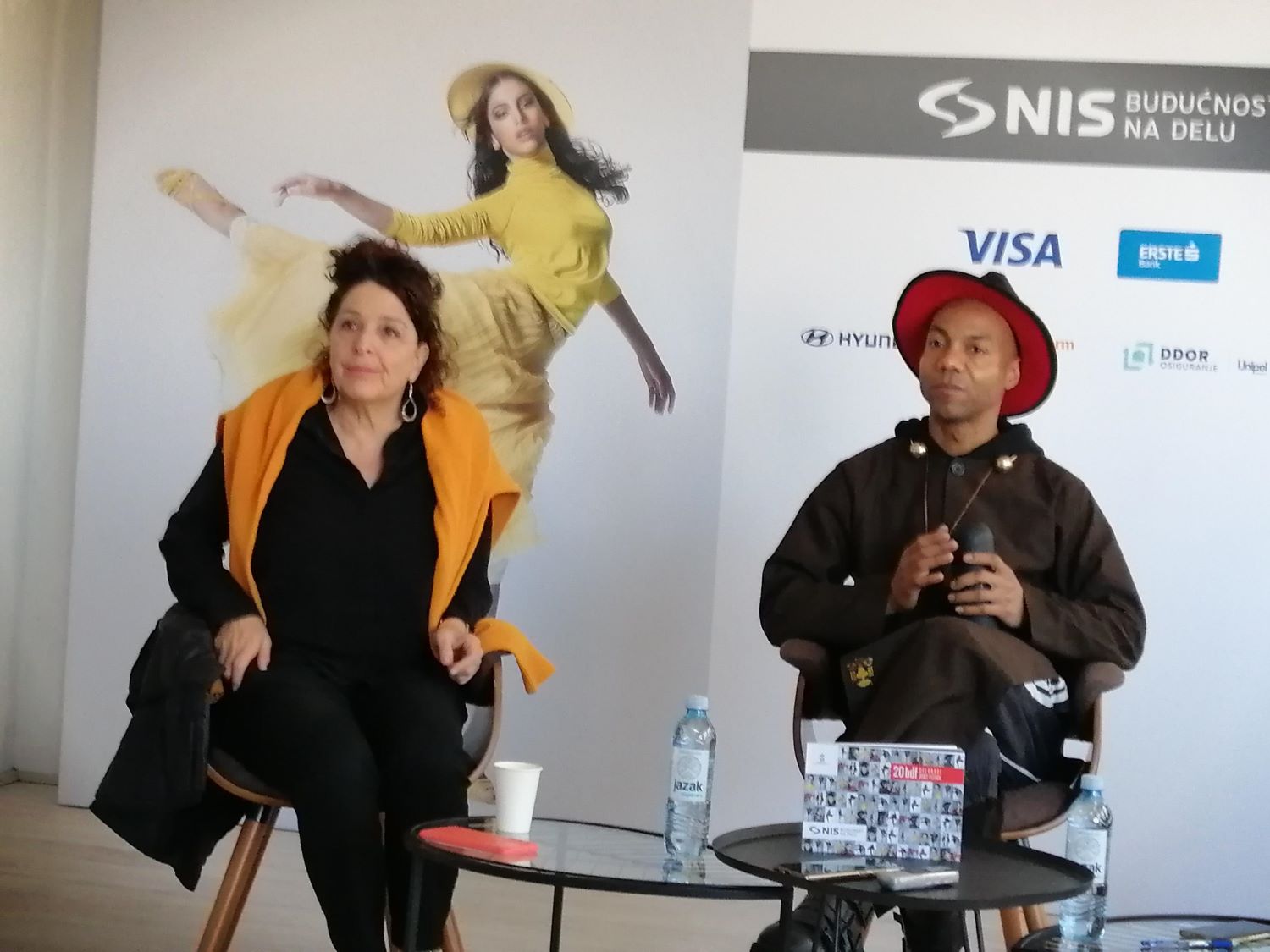The only light on the stage, apart from the glittering golden bodies of dancers, came from a projector that emits monochrome, kaleidoscopic, three-dimensional “backdrops”. I am talking about the NY City Shamel Pitts’s contemporary ballet production “Tribe.” The sounds of electronic music contributed to the futuristic-cosmic atmosphere in a play, at times calming, at times pulsating, like in the rhythms of a night club, along with sporadic parts of the song “Feeling Good” by Nina Simon. Well yes! Nina Simone and electronic music! Nina Simone was a prominent jazz musician of the late 1950s and 60s and beyond her fame as a jazz musician, Simone reached even greater status as a civil rights activist. Her music spoke to the hearts of hundreds of thousands in the black community who were struggling to rise above a second-class citizen status. Simone’s powerful anthems was calling for a change, while Nina Simone’s musical interpretation and approach was very unique because of her background as a classical pianist, “while Nina’s untrained vocal chops were a perfect blend of rough growl and smooth straight-tone”. You must ask yourself, how’s that relevant to this dance production, beside that it sends the right message? Mainly because the purpose of the score is to give to a performer to create. We are not thinking here about the musical structure or dance structure in order to appreciate the qualities that are exemplified here and there and those that are not. The piece poses many questions that electronic music does not answer, but maybe Nina Simone does. There are in this production a phenomenal physical properties of sound that one notice on a personal level. There are questions of course such as, how in this dance production those two, the electronic music and Nina Simone are structured with an actual dance? We are assuming things, and this is one of the quality while composing visual effects of dance and music in our heads into the division of rhythmic values in units of two, three or four, with some other elements of the show that actually are requiring more complex methods of researching. Or that may be just how my brain works, not really sure.

But “The Black Hole: Trilogy and Triathlon” as a part of production, is the final part of so called black trilogy that started in 2015, which Pits described as the “personal evolution of a young, gifted, black artist”. According to Pits, he was inspired by the nightlife of Tel Aviv, but also by “the search for roots and togetherness” and his NY solo piece “Black Box” performed in his room in Tel Aviv. This was followed by the duet “Black Velvet: Architectures and Archetypes” with the Brazilian Mirelle Martins, and Lucca del Carlo”about the efficiency of two strangers who become partners“, which expanded his original idea to explore “all those different nuances and dimensions within the black community“. Although, he received great reviews for “the black hole” finding himself in the “New York Times” editor’s choice, where Shamel Pitts says that he prefers the comments of ordinary viewers. Many people told him that the piece touched them on a human level. ” The Black Hole explores an odyssey in which three artists of African origin or, rather, from the African diaspora, join forces to create a trinity of strength, Afro-futurism and a strong embrace. Although the title is derived from the cosmic phenomenon of the black hole, this is not a piece about explaining science. Namely, in a choreographic sense, we propose that the idea of the transformation environment of a black hole be used to create a mysterious atmosphere, according to what it encompasses and what it can contain. Black Hole is a work that engages the audience and takes them on a vivid, hypnotic journey, lasting one hour, one minute and one second, with no exit.” Said Pitts in a press conference. “Black Box” was my first piece. At that time I was still living in Tel Aviv and performing for the Batsheva Ballet Dance Company. “
Pitt kept his curiosity, openness, willingness to experiment that he actually learned from Ohad Naharin, well known Israeli origin choreographer. He followed this man’s ability to lead, to teach, to discover and analyze people, as well as his great capacity for artistic expression. But to follow the idea of the black community Pitts said ”I hired another South African artist, Tushrik Fredericks, to join us on stage, while the soundscape was created by the New York composer Sivan Jakobović. “Black hole” unobtrusively became the story of the origin of our “tribe”.
Behind the “cosmic” title and clear association with black artists performing, there is a mention of “red” in a whole body of things, quite earthly, and human in his first work of collection on a solo “Black Box Little Book of Red”. “I like when I can play with words and when they can take on multiple meanings at once. For example, black is actually not a color but a shade, and depending on the context, it can be the absence of color or the sum of all colors. Red is not only a color, but also my childhood nickname. Growing up in Brooklyn, all my friends and family called me Red (Red). My family still calls me Red. After experiencing a whole set of incredible situations abroad, while also creating my own, independent existential framework through the Black Series, I wanted to return home. Here in Brooklyn, I was trying to rediscover my childhood, my childlike curiosity about life, colorfulness, playfulness and lightness. The red series is a canvas for these qualities. And within childish naivety there is still a great depth. Intersections between loneliness, uncertainty, creativity and solidarity.”

Powered and presented by Belgrade Dance Festival 2023


